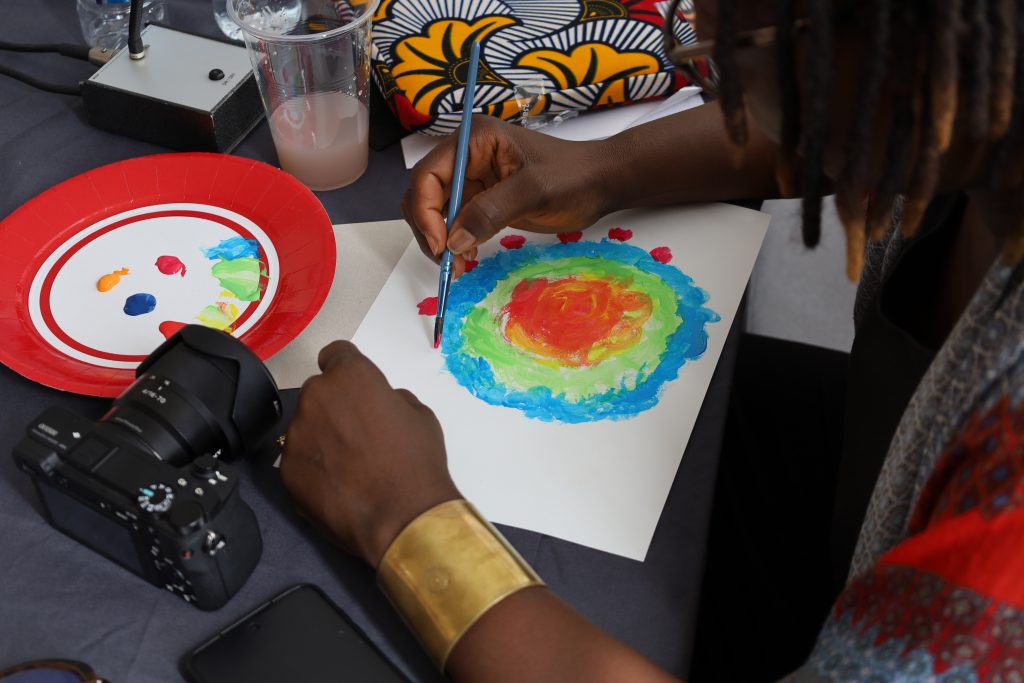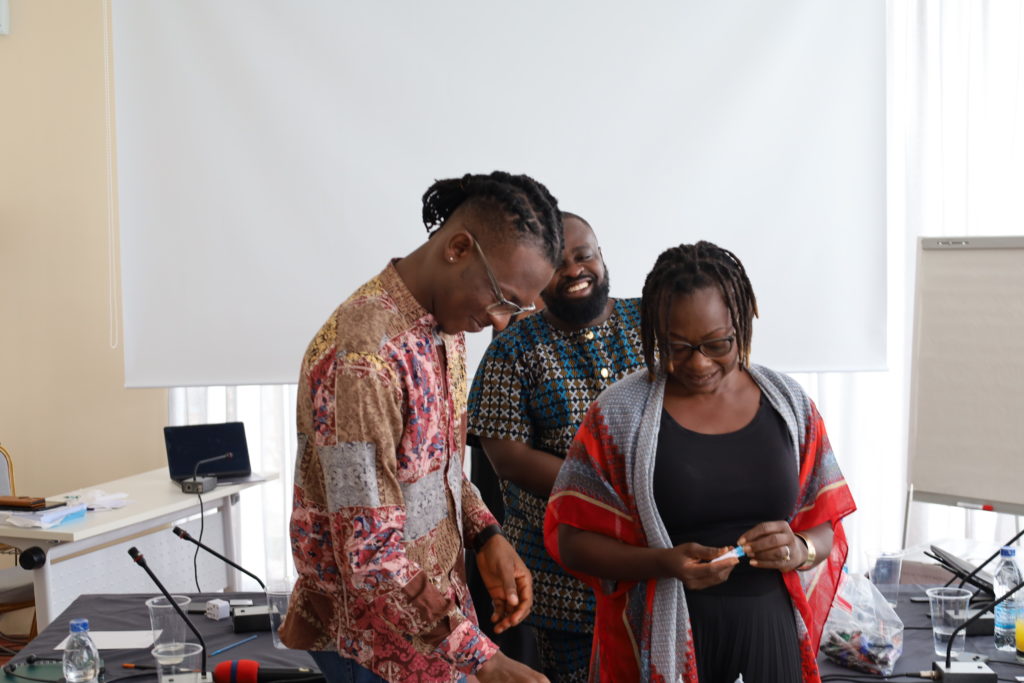
By Stéphane Simporé, Director of Communications and Knowledge Management.
For our 2021 Annual Report, ISDAO's Director of Communications and Knowledge Management shared some of our learnings from working as an entirely remote and linguistically diverse team.
How did you experience the transition from a team of 3 people to a team of 8 in a few months? What were the challenges? What were the delights?
ISDAO hired its first staff members in early 2019 and onward. Between this period and mid-2021, ISDAO had three staff members. Then new people joined the team, growing to 8 people. We welcomed this growth with delight and relief because we knew our workload would be more evenly shared and we could expand our commitment to our movement. We were excited about the energy, enthusiasm and skills these new people were bringing to the development of ISDAO. And that was indeed a reality.
ISDAO is increasingly reflecting the energy and diversities of our communities, including linguistic diversity, through this growth in staff. We had two major fears: working 100% online and remotely as a team, and the language difference. Although ISDAO is a fully bilingual - English and French - organization, not all staff members fully understand both languages. For example, in the Communication and Knowledge Management Department, the two staff members are respectively only French and only English speaking.
What are the challenges of working in a linguistically diverse and fully remote team?
Being a linguistically diverse team working remotely is complex and requires a shared infrastructure. The challenges are manifold: Language is a major vector for sharing data daily in professional relationships. However, if there is a language barrier, this can be a major obstacle to collaboration.
Moreover, working remotely makes this more difficult because if one cannot express oneself verbally, one has other means of expression such as body language and mime. But this only works when both people communicating see each other physically. The other challenge is interactions with partners including grantee partners who are based in a country with a working language different from the main language of the ISDAO team member.
Therefore, it was important for ISDAO to put in place a set of mechanisms and tools to overcome these challenges and to continue to be an inclusive organization, including linguistic inclusion.
What are the strategies or efforts adopted by ISDAO to address these challenges?
First, I want to acknowledge the advantages of working remotely, including the flexibility for each member to organize their work. This gives moral responsibility to the individual and creates a spirit of mutual trust in the collaboration. Moreover, it builds self-discipline and creates conditions for a culture of individual and collective accountability. The other issue is the language difference among staff members. ISDAO made this choice in recognition of the scarcity of knowledge resources in the region, but also with the vision of overcoming recruitment criteria that may be discriminatory in the philanthropy and social justice sectors in our region and beyond.
At ISDAO, we have tried several tools and structures to overcome the language barrier and challenges of remote working. For linguistic inclusion, we have adopted an application for the automated translation of emails and messages between staff members. This means that messages exchanged are in both French and English. For the content of formal and/or external documents, we contract professional translators and have built an extensive repertoire of translators.
We have also built up a large repertoire of professional interpreters who, in addition to mastering the techniques of simultaneous or consecutive interpretation, have a perfect command of our working vocabulary while respecting gender diversity and inclusion. These interpreters work with us during internal virtual meetings and external meetings with partners, including physical meetings. Finally, within ISDAO, there is a support mechanism for staff to take language courses to become fully bilingual in French and English and several staff members have enrolled.
As far as remote working is concerned, a suitable mechanism has also been put in place to “reduce” the distance between staff through the adoption of several channels of interaction between members including Whatsapp, Zoom, and of course, professional email exchanges. Every week, we organize a virtual coffee break with all staff. As the name suggests, this is an informal virtual conversation space to discuss “anything and everything” except work. We have regular staff meetings with technical support from interpreters. We also have department meetings, leadership meetings, etc. It may seem like too many meetings, but they are needed to keep in touch and reduce the hundreds or thousands of miles that can separate staff members.
Finally, we hold our staff retreat about every 6 months which is an important time to physically connect, plan our work and build our team around our commitment to the LGBTQI movement. We also use times of physical visits to our grantee partners in a given area to connect in person.
What advice can you give to other organizations that are trying to build a regionally distributed, linguistically diverse and/or remote team?
An operating structure like that of ISDAO is rare and relatively new. We recognize the complexity of putting it into practice in many ways. However, the challenges involved are not insurmountable, and the operation of ISDAO is proof of this. At ISDAO we are open to learning: adopting this structure of distance working and language diversity has been a learning process and as we try out different working tools and collaborations, we are evaluating and adopting the best of what we have. We evaluate and adopt the tool according to the needs of our work.
In addition, one should not hesitate to take a participatory approach in building such a system. This means opening up the approach to all staff to be able to propose innovative and adapted solutions according to the needs and contexts. For example, at ISDAO, formal meetings have sometimes been organised through a group call on Whatsapp, as internet access can be erratic from one country to another in the region.
The other important point is flexibility in such an approach: it means being flexible to adjust a tool or change it radically if it does not seem to work for a staff member. At ISDAO, we have also benefited from the advice and suggestions of professional interpreters in setting up our working infrastructure to make it viable and sustainable. One should therefore not hesitate to seek their input.
Do you have any other thoughts, tips or lessons to share about your experience with the ISDAO team?
Adopting an infrastructure for a geographically distributed team working remotely with language disparities may seem impossible. However, the recent global health crisis forced several organizations/firms/companies to implement a remote working infrastructure unexpectedly and this has continued although the level of the crisis has generally decreased today. Many organizations continue to gradually change their work structure to remote, and staff appreciate this as it has more benefits than insurmountable challenges.
The same applies to the composition of a linguistically disparate team. At ISDAO we have capitalized on our practice and learning over the last few years in this area in a recently published guide to help organizations who want to approach it to be able to do so and adapt the tools to their needs.
This article was first published in our 2021 Annual Report.
Click on the link below to download the full report and learn more about our work in 2021 and the other learnings we shared.

